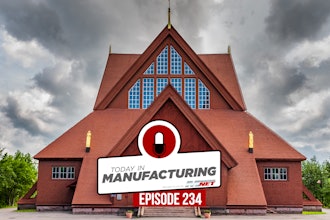Driven by fierce customer demand and global competition, today’s manufacturers are scrambling to deliver the highest quality products at the lowest possible cost. To stay competitive, manufacturers are turning to technologies like 3D printing, robotics, cloud computing, intelligent automation and advanced analytics—among other emerging technologies—to revolutionize every aspect of the business, from sales to the supply chain.
But with the benefits of digitization and automation now abundantly clear, it’s quickly becoming the norm across the industry, leaving many manufacturers on the hunt for their next big competitive advantage. Many are now turning to procurement. The function sits at the core of manufacturing operations and presents a significant, untapped opportunity to leverage spending insights to drive a new wave competitive advantage.
Recognizing this opportunity, we recently analyzed procurement data from over 180 million transactions across the manufacturing industry. The goal: to benchmark procurement KPIs to help manufacturers understand how they perform, how they compare and where they can improve and drive more value. The analysis was based on real data from manufacturing organizations around the purchasing of indirect spend.
One of the first data points that stood out: The amount of spend in the facilities category has increased significantly from 2015 to 2017, particularly when we look at spend per headcount, which experienced 34 percent growth. Another interesting finding: the number of suppliers across indirect categories has grown the fastest in utilities, with a 39.1 percent increase, especially in the water and sewer subcategory. At the same time, payment terms have become less favorable in the utilities category over the last few years, driven by the oil, heat and electricity subcategories.
We also found a significant drop (12 percent) in marketing spend per employee. We can point to a decrease in spend per headcount in market research and media buying as the primary cause for this shift.
What do these numbers mean for manufacturers? Spending dynamics and supplier relationships continue to shift, and margins will continue to be tight. With markets entering an unpredictable state, there’s very little room for financial error in 2019. While most of procurement’s resources are typically dedicated to managing direct spend, the indirect side of the business presents an immediate opportunity to reduce costs and drive efficiencies for manufacturers. Even more valuable: being able to aggregate and analyze indirect spending data across multiple plants, sub divisions and suppliers, and acting on the insights to drive bottom-line improvements (and more spending flexibility) across the globe.
While analysis like this offers manufacturers valuable insights into current spending trends, it’s only a static snapshot. The real value of procurement benchmarking lies in the ability to compare your own data against your peers, category-by-category, updated every month, to help drive informed business decisions every single day. With AI and machine learning tools more readily available, manufacturers have a wealth of new data at their fingertips, and an ability to clean, analyze and act on it like never before.
In 2019, we expect leading manufacturers to invest more in turning that data into dollars. The insights gained by benchmarking, for instance, are only valuable when they result in actions that improve performance. The great thing about benchmarking—at least when it’s powered by machine learning and data-driven technology and done in real time—is that an organization can unveil value from insights that previously may not have been considered. Manufacturers could begin the process with certain metrics in mind, but come out with insights about a different set of KPIs that could have an even bigger impact on their operations.
Another way of looking at it: traditional approaches to analyzing procurement data were based on finding answers to a set of pre-determined questions or queries. Today, advances to AI have shifted that mindset, with technology now able to find answers to questions and problems—and opportunities—manufacturers didn’t even know they had.
Every organization is looking for their next big opportunity. As AI, machine learning and big data continue to push their way into the industry, leaders must realize and invest in the possibilities these technologies afford them—and for manufacturers, one of those benefits is the value of data-driven procurement benchmarking. Are you leveraging procurement to your full advantage?
Sammeli Sammalkorpi is co-founder and vice president of customers at Sievo.






















